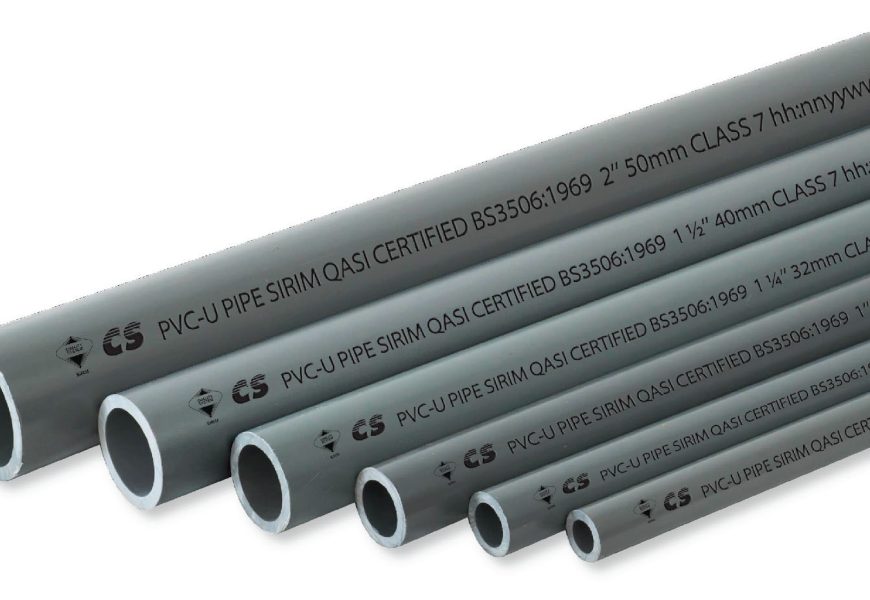When it comes to plumbing projects, proper installation of pipes is crucial for ensuring efficiency and durability. Among the various types of piping available, PVC Pressure Pipe Plain End is a popular choice for its affordability, ease of installation, and impressive performance.
What is PVC Pressure Pipe Plain End?
Before diving into the installation process, it’s essential to understand what PVC pressure pipe plain end is. PVC, or polyvinyl chloride, is a strong, durable plastic used widely in plumbing and construction. The term “plain end” refers to the smooth, unthreaded ends of the pipe, which allow for easy connections to other pipes or fittings using adhesives or mechanical methods.
Why Use PVC Pressure Pipe Plain End?
PVC pressure pipes are renowned for their high-pressure resistance, lightweight design, and corrosion resistance. These features make them ideal for various applications, including:
- Water Supply Systems: Transporting potable water efficiently.
- Irrigation Systems: Ensuring reliable water delivery in agricultural settings.
- Sewage and Drainage: Effectively managing wastewater.
- Industrial Applications: Moving chemicals and other liquids safely.
Preparing for Installation
Before you begin the installation process, proper preparation is essential. Here are the steps to ensure you have everything you need:
1. Gather Tools and Materials
Ensure you have the following tools and materials on hand before starting the installation:
- PVC Pressure Pipe Plain End: Choose the correct size based on your project’s specifications.
- PVC Pipe Cutter: For making clean cuts.
- PVC Solvent Cement: Specifically formulated for joining PVC pipes.
- PVC Primer: Helps prepare the pipe surface for better adhesion.
- Safety Gear: Gloves and safety goggles for personal protection.
- Measuring Tape: To measure and cut pipes accurately.
2. Plan the Layout
Before cutting any pipes, plan your layout carefully. Consider the following:
- Pipe Size: Choose the appropriate diameter based on the flow rate and pressure requirements.
- Pipe Length: Measure the distances accurately to avoid unnecessary joints or fittings.
- Access Points: Ensure that your installation allows for easy access for maintenance in the future.
Steps for Installing PVC Pressure Pipe Plain End
Now that you have your materials ready and a plan in place, follow these steps to install PVC pressure pipe plain end effectively.
1. Measure and Cut the Pipe
Using your measuring tape, measure the required length of the PVC pipe. Mark the cut point clearly, and use a PVC pipe cutter to make a clean, straight cut. Ensure that the ends are smooth and free of burrs, as rough edges can cause leaks.
2. Prepare the Pipe and Fittings
Before applying adhesive, it’s crucial to prepare the pipe and fittings properly:
- Clean the Ends: Use a clean cloth to wipe the ends of the pipe and the inside of the fitting. This ensures that no dirt or debris interferes with the bond.
- Apply Primer: If using PVC primer, apply a coat to the ends of the pipe and the inside of the fitting. This step is optional but highly recommended as it enhances adhesion.
3. Apply Solvent Cement
Once the primer has dried (if used), apply a liberal amount of PVC solvent cement to both the pipe and the fitting. Be sure to cover all areas where the two will join.
4. Join the Pipe and Fitting
Immediately after applying the solvent cement, insert the pipe into the fitting with a twisting motion to ensure an even distribution of the adhesive. Hold the joint for about 30 seconds to allow the bond to set.
5. Allow for Curing Time
After making the connection, it’s crucial to allow the solvent cement to cure properly. Refer to the manufacturer’s instructions for the recommended curing time, typically around 15 minutes for initial setting and up to 24 hours for complete curing before applying pressure to the system.
6. Test the System
Once the curing time has elapsed, it’s time to test your installation:
- Check for Leaks: Turn on the water supply gradually and inspect all joints for leaks. If any leaks are detected, turn off the water immediately and reapply solvent cement as necessary.
- Monitor Pressure: Ensure that the system can handle the required pressure without issues.
Best Practices for Maximum Efficiency
To ensure your PVC pressure pipe plain end installation operates efficiently, consider the following best practices:
1. Use Quality Materials
Always opt for high-quality PVC pipes and fittings from reputable manufacturers. Cheaper alternatives may save you money upfront but can lead to costly repairs down the line.
2. Follow Local Codes and Regulations
Ensure your installation complies with local plumbing codes and regulations. This step not only ensures safety but also prevents potential legal issues in the future.
3. Provide Adequate Support
Support your PVC pipes properly to prevent sagging and stress at the joints. Use pipe hangers or brackets as needed to keep the pipes securely in place.
4. Avoid Direct Sunlight
While PVC is UV resistant, prolonged exposure to sunlight can degrade the material over time. If installing pipes outdoors, consider using UV-resistant products or protective coatings.
5. Regular Inspections
Schedule regular inspections of your plumbing system to identify any potential issues before they become major problems. Look for signs of wear, leaks, or damage to ensure optimal performance.
Troubleshooting Common Issues
Even with proper installation, some issues may arise over time. Here are common problems and their solutions:
1. Leaking Joints
If you notice leaks at the joints, it may be due to improper adhesive application or insufficient curing time. In such cases, you may need to reapply solvent cement, ensuring the pipe ends and fittings are clean and dry before doing so.
2. Pressure Drops
If you experience pressure drops in your plumbing system, check for blockages or kinks in the pipe. Inspect all joints and fittings to ensure they are securely bonded.
3. Cracks or Damage
Inspect the pipes regularly for signs of cracks or damage, particularly if exposed to extreme temperatures. If you find any damaged sections, cut out the affected area and replace it with a new piece of PVC pipe.
Conclusion
Installing PVC pressure pipe plain end can be a straightforward process when done correctly. By following the steps outlined in this guide and adhering to best practices, you can ensure a successful installation that maximizes efficiency and longevity.
The durability and versatility of PVC pressure pipe make it an excellent choice for various plumbing applications, from residential systems to industrial projects. With careful planning, proper installation techniques, and regular maintenance, you can enjoy a reliable plumbing system that serves you well for years to come. Embrace the advantages of PVC pressure pipe plain end, and take your plumbing projects to the next level!















